#such as solar and wind power
Explore tagged Tumblr posts
Text
"China’s carbon emissions have flatlined over the past six months and there’s now an opportunity for substantial declines over the next decade, analysts say.
The rapid growth in clean energy generation has been sufficient to offset a recent surge in power demand caused by higher air conditioning use amid late-summer heatwaves, and the government’s manufacturing push, according to an analysis by Lauri Myllyvirta of the Centre for Research on Energy and Clean Air (CREA).
China’s carbon emissions fell by 1% in the second quarter of 2024 and were flat in the third quarter, providing another indication that emissions may have already peaked.
This is largely because solar power output was up 44% in the three months to end-September, compared to a year before, while wind power generation grew 24%. In the first nine months of 2024, China installed 161GW of new solar capacity and 39GW of wind, per CREA data.
For emissions to post a decline in 2024 as a whole, there will need to be a 2% reduction in the fourth quarter, Myllyvirta’s calculations show. That’s probable if power demand growth cools as expected and hydro plants perform in line with historical averages, he wrote in a post on X, adding that over the entire summer period, clean energy expansion covered all electricity demand growth.
“If the current downturn in China’s emissions is sustained — with emissions falling in the second quarter and stable in the third quarter — that would open the door to the country beginning to reduce emissions much faster than its current commitments require.
“This would have enormous significance for the global effort to avoid catastrophic climate change, as China’s emissions growth has been the dominant factor pushing global emissions up for the past eight years since the signing of the Paris climate agreement.”
Based on current trends and targets, CREA expects China’s emissions will decline 30% by 2035. The International Energy Agency says emissions will fall 24% by then based only on stated policies, but that could be raised to 45% if the country follows a pathway that’s consistent with its long-term carbon neutrality target.
For the time being, Chinese policymakers are setting relatively unambitious targets, and “it’s vital that future targets reflect ongoing clean energy trends to avoid locking in lower ambitions,” Myllyvirta said."
-via The Progress Playbook, October 29, 2024
#china#solar power#wind power#renewables#carbon emissions#fossil fuels#asia#climate change#climate action#climate news#good news#hope
5K notes
·
View notes
Text
Dandelion News - September 8-14
Like these weekly compilations? Tip me at $kaybarr1735 or check out my new(ly repurposed) Patreon!
1. Pair of rare Amur tiger cubs debuting at Minnesota Zoo are raising hopes for the endangered species

“[The Minnesota Zoo’s] Amur tigers have produced 57 cubs, [… 21 of which] have gone on to produce litters of their own, amounting to another 86 cubs. […] “They’re showing a lot of resiliency, which is something that we work hard for in human care. We want these animals to have a lot of confidence and be able to adapt to new environments just as they’re doing today.””
2. Powered by renewable energy, microbes turn CO₂ into protein and vitamins
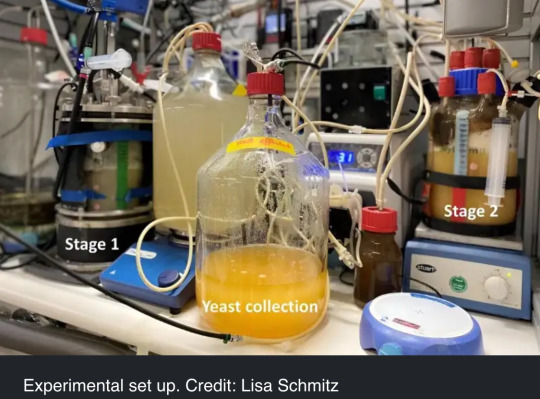
“The team designed a two-stage bioreactor system that produces yeast rich in protein and vitamin B9. [… The protein] levels in their yeast exceed those of beef, pork, fish, and lentils. […] Running on clean energy and CO2, the system reduces carbon emissions in food production. It uncouples land use from farming, freeing up space for conservation[… and] will help farmers concentrate on producing vegetables and crops sustainably.”
3. JCPenney Launches Apparel Collection Aimed At Wheelchair Users

“A major department store is rolling out a new line of clothing specifically tailored to meet the needs of women who use wheelchairs featuring options for both everyday wear and special occasions. [… The clothing have] modifications like zippers located for easy access, pocket positioning and extended back rises optimized for the seated position and shorter sleeves to limit interference with wheels.”
4. Snails bred in Edinburgh Zoo sent to re-populate species in French Polynesia
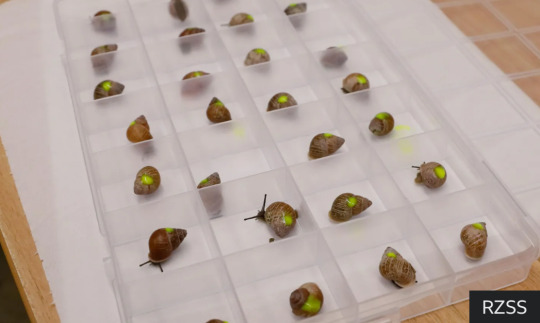
“Thousands of rare partula snails bred at Edinburgh Zoo are to be released in French Polynesia to restore the wild population of the species.The last surviving few of the species were rescued in the early 1990s[….] 15 species and sub-species [are being bred in zoos for repopulation], the majority of which are classed as extinct in the wild.”
5. [NH Joins 19 Other States] to Provide Essential Behavioral Health Services Through Mobile Crisis Intervention Teams
“[CMS] approved New Hampshire’s Medicaid State Plan Amendment for community-based mobile crisis intervention teams to provide services for people experiencing a mental health or substance use disorder crisis. […] The multidisciplinary team provides screening and assessment; stabilization and de-escalation; and coordination with and referrals to health, social, and other services, as needed.”
6. Recovery plan for Missouri population of eastern hellbender
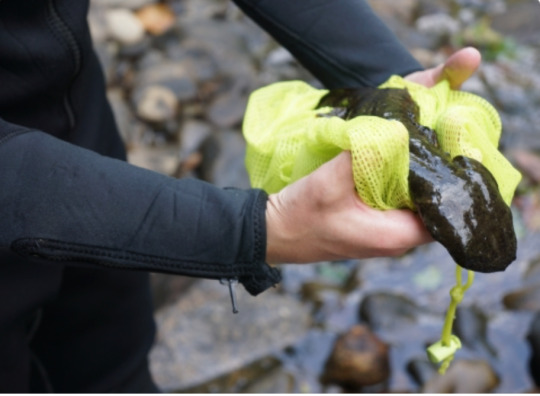
“It is expected that recovery efforts for the Missouri DPS of the eastern hellbender will reduce sedimentation and improve water quality in the aforementioned watersheds, which will also improve drinking water, as well as benefit multiple federally listed mussels, sport fish and other aquatic species.”
7. How $7.3B will help rural co-ops build clean power—and close coal plants
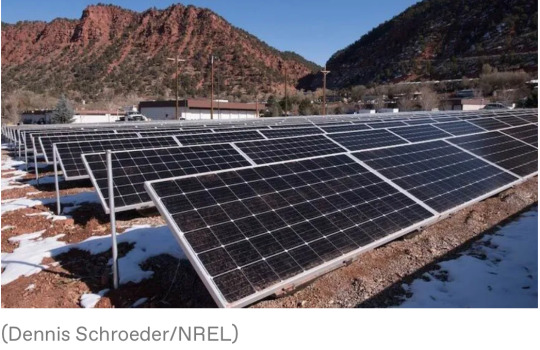
“[The funds are] serving about 5 million households across 23 states [… to] build wind and solar power, which is now cheaper than coal-fired power across most of the country. […] Some of it will be used to pay down the cost of closing coal plants[….] federal funding could help co-ops secure enough wind, solar, and battery resources to retire their entire coal capacity by 2032, cutting carbon emissions by 80 to 90 percent and reducing wholesale electricity costs by 10 to 20 percent[….]”
8. Native-led suicide prevention program focuses on building community strengths

“[Indigenous researchers have] designed programs that aim to build up a community’s endemic strengths, rather than solely treating the risks facing individuals within that community. By providing support and resources that enable access to Alaska Native cultural activities, they hope to strengthen social bonds that build resilience. […] “In a Yup’ik worldview, suicide is not a mental health disorder, and it’s not an individual affliction, it’s a disruption of the collective.””
9. Another rare Javan rhino calf spotted at Indonesia park

“A new Javan rhino calf has been spotted in an Indonesian national park, the facility's head said Friday, further boosting hopes for one of the world's most endangered mammals after two other […] calves were spotted earlier this year at the park, which is the only habitat left for the critically endangered animal.”
10. Transparent solar cells can directly supply energy from glass surfaces

“[Researchers have] unveiled a method of supplying energy directly from glass of buildings, cars, and mobile devices through transparent solar cells. […] It has also succeeded in charging a smartphone using natural sunlight. It also proved the possibility that a screen of a small mobile device can be used as an energy source.”
September 1-7 news here | (all credit for images and written material can be found at the source linked; I don’t claim credit for anything but curating.)
#hopepunk#good news#nature#tiger#endangered species#sustainability#animals#nutrition#jc penney#wheelchair user#adaptive clothing#fashion#snail#edinburgh#scotland#french polynesia#mental health#new hampshire news#missouri#hellbenders#salamander#wind energy#solar power#clean energy#native#community#rhino#technology#baby animals#solar panels
504 notes
·
View notes
Text
#renewable energy#green energy#climate change#global warming#good news#clean energy#hope#hopepunk#solarpunk#solar energy#wind power#climate anxiety#climate grief#ecoanxiety#ecogrief#environment
146 notes
·
View notes
Text

There's a path you take and a path untaken. The choice is up to you my friend.
#morning#good morning#good morning message#good morning image#good morning man#the good morning man#the entire morning#gif#gm#morning vibes#morning motivation#tgmm#☀️🧙🏼♂️✌🏼#sun#the sun#skull#choice#choose#decide#path#paths#do you want a good morning or not?#want#green energy#solar power#solar panels#solar energy#windmill#wind energy#wind power
127 notes
·
View notes
Text
62 notes
·
View notes
Text
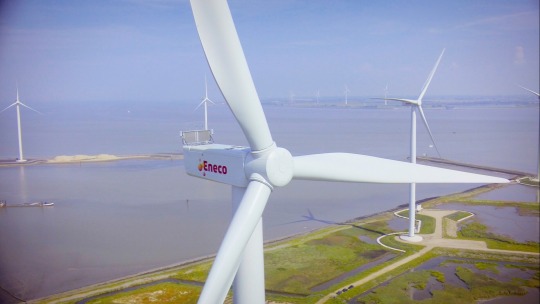

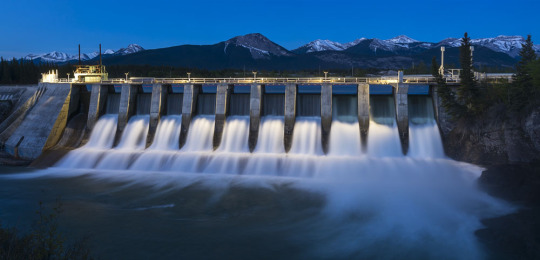
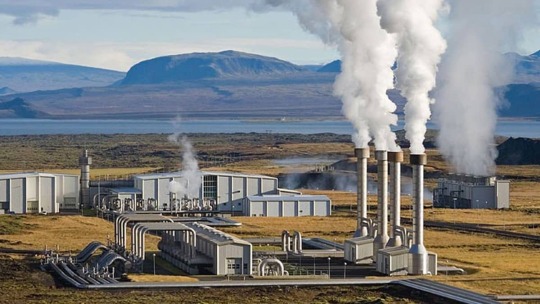
you;re all so sexy
#yeah I’m bisexual#attracted to guys girls genderqueers and renewable energy sources#solarpunk#objectum#climate positivity#IM SO EXCITED FOR A FUTURE FULL OF RENEWABLE ENERGY!!!! I KNOW IT IS POSSIBLE!!!!!!!#in order left to right top to bottom: wind turbines solar panels hydroelectric dam and geothermal power plant#I LOVE GEOTHERMAL PLANTS#from new zealand aotearoa so I see a lot of them#THEY MAKE CLOUDS ^_^
381 notes
·
View notes
Text
#wind energy#wind power#solar power#solar energy#green energy#green technology#good news#environmentalism#science#environment#nature#usa#united states#climate change#climate crisis#greenhouse gases
40 notes
·
View notes
Text

Big Generation
24 notes
·
View notes
Text
“The more we go for clean energy, the more resistant we are to global conflicts because nobody can take solar or wind as a hostage,”
International Energy Agency boss Dr Fatih Birol
According to Dr Birol, we are entering “the age of electricity”, and the majority of it is produced from clean energy.
Solar, wind, hydropower and nuclear make up a big part of Europe’s clean mix but Dr Birol suggests geothermal energy should become a more important ingredient in the bloc’s energy cocktail.
“This can help us to generate electricity without interruption,” Dr Birol explained, adding that, unlike wind or solar, it’s available 24/7.
“We are working hard to bring the cost of geothermal energy down so that it also complements solar and wind.”
32 notes
·
View notes
Text
Wind and solar generated more electricity than coal through May, an E&E News review of federal data shows, marking the first time renewables have outpaced the former king of American power over a five-month period. The milestone illustrates the ongoing transformation of the U.S. power sector as the nation races to install cleaner forms of energy to reduce greenhouse gas emissions from fossil fuels. Power markets have witnessed a precipitous drop in coal-fired generation this year, driven by low natural gas prices, a mild winter and a wave of coal plant retirements. “From a coal perspective, it has been a disaster,” said Andy Blumenfeld, an analyst who tracks the industry at McCloskey by OPIS. “The decline is happening faster than anyone anticipated.”
257 notes
·
View notes
Text

Before anyone says it: yes, nuclear is better than coal. But I know astroturfed blame-shifting when I see it.
#climate change#climate crisis#wildfire#global warming#cleanenergy#renewableenergy#solarpunk#wind power#solar power#fossil fuels#nuclear power#capitalism#environmentalism#political comics#political cartoon
48 notes
·
View notes
Text
"The man who has called climate change a “hoax” also can be expected to wreak havoc on federal agencies central to understanding, and combating, climate change. But plenty of climate action would be very difficult for a second Trump administration to unravel, and the 47th president won’t be able to stop the inevitable economy-wide shift from fossil fuels to renewables.
“This is bad for the climate, full stop,” said Gernot Wagner, a climate economist at the Columbia Business School. “That said, this will be yet another wall that never gets built. Fundamental market forces are at play.”
A core irony of climate change is that markets incentivized the wide-scale burning of fossil fuels beginning in the Industrial Revolution, creating the mess humanity is mired in, and now those markets are driving a renewables revolution that will help fix it. Coal, oil, and gas are commodities whose prices fluctuate. As natural resources that humans pull from the ground, there’s really no improving on them — engineers can’t engineer new versions of coal.
By contrast, solar panels, wind turbines, and appliances like induction stoves only get better — more efficient and cheaper — with time. Energy experts believe solar power, the price of which fell 90 percent between 2010 and 2020, will continue to proliferate across the landscape. (Last year, the United States added three times as much solar capacity as natural gas.) Heat pumps now outsell gas furnaces in the U.S., due in part to government incentives. Last year, Maine announced it had reached its goal of installing 100,000 heat pumps two years ahead of schedule, in part thanks to state rebates. So if the Trump administration cut off the funding for heat pumps that the IRA provides, states could pick up the slack.

Local utilities are also finding novel ways to use heat pumps. Over in Massachusetts, for example, the utility Eversource Energy is experimenting with “networked geothermal,” in which the homes within a given neighborhood tap into water pumped from underground. Heat pumps use that water to heat or cool a space, which is vastly more efficient than burning natural gas. Eversource and two dozen other utilities, representing about half of the country’s natural gas customers, have formed a coalition to deploy more networked geothermal systems.
Beyond being more efficient, green tech is simply cheaper to adopt. Consider Texas, which long ago divorced its electrical grid from the national grid so it could skirt federal regulation. The Lone Star State is the nation’s biggest oil and gas producer, but it gets 40 percent of its total energy from carbon-free sources. “Texas has the most solar and wind of any state, not because Republicans in Texas love renewables, but because it’s the cheapest form of electricity there,” said Zeke Hausfather, a research scientist at Berkeley Earth, a climate research nonprofit. The next top three states for producing wind power — Iowa, Oklahoma, and Kansas — are red, too.
State regulators are also pressuring utilities to slash emissions, further driving the adoption of wind and solar power. As part of California’s goal of decarbonizing its power by 2045, the state increased battery storage by 757 percent between 2019 and 2023. Even electric cars and electric school buses can provide backup power for the grid. That allows utilities to load up on bountiful solar energy during the day, then drain those batteries at night — essential for weaning off fossil fuel power plants. Trump could slap tariffs on imported solar panels and thereby increase their price, but that would likely boost domestic manufacturing of those panels, helping the fledgling photovoltaic manufacturing industry in red states like Georgia and Texas.
The irony of Biden’s signature climate bill is states that overwhelmingly support Trump are some of the largest recipients of its funding. That means tampering with the IRA could land a Trump administration in political peril even with Republican control of the Senate, if not Congress. In addition to providing incentives to households (last year alone, 3.4 million American families claimed more than $8 billion in tax credits for home energy improvements), the legislation has so far resulted in $150 billion of new investment in the green economy since it was passed in 2022, boosting the manufacturing of technologies like batteries and solar panels. According to Atlas Public Policy, a research group, that could eventually create 160,000 jobs. “Something like 66 percent of all of the spending in the IRA has gone to red states,” Hausfather said. “There certainly is a contingency in the Republican party now that’s going to support keeping some of those subsidies around.”
Before Biden’s climate legislation passed, much more progress was happening at a state and local level. New York, for instance, set a goal to reduce its greenhouse gas emissions from 1990 levels by 40 percent by 2030, and 85 percent by 2050. Colorado, too, is aiming to slash emissions by at least 90 percent by 2050. The automaker Stellantis has signed an agreement with the state of California promising to meet the state’s zero-emissions vehicle mandate even if a judicial or federal action overturns it. It then sells those same cars in other states.
“State governments are going to be the clearest counterbalance to the direction that Donald Trump will take the country on environmental policy,” said Thad Kousser, co-director of the Yankelovich Center for Social Science Research at the University of California, San Diego. “California and the states that ally with it are going to try to adhere to tighter standards if the Trump administration lowers national standards.”
[Note: One of the obscure but great things about how emissions regulations/markets work in the US is that automakers generally all follow California's emissions standards, and those standards are substantially higher than federal standards. Source]
Last week, 62 percent of Washington state voters soundly rejected a ballot initiative seeking to repeal a landmark law that raised funds to fight climate change. “Donald Trump’s going to learn something that our opponents in our initiative battle learned: Once people have a benefit, you can’t take it away,” Washington Governor Jay Inslee said in a press call Friday. “He is going to lose in his efforts to repeal the Inflation Reduction Act, because governors, mayors of both parties, are going to say, ‘This belongs to me, and you’re not going to get your grubby hands on it.’”
Even without federal funding, states regularly embark on their own large-scale projects to adapt to climate change. California voters, for instance, just overwhelmingly approved a $10 billion bond to fund water, climate, and wildfire prevention projects. “That will be an example,” said Saharnaz Mirzazad, executive director of the U.S. branch of ICLEI-Local Governments for Sustainability. “You can use that on a state level or local level to have [more of] these types of bonds. You can help build some infrastructure that is more resilient.”
Urban areas, too, have been major drivers of climate action: In 2021, 130 U.S. cities signed a U.N.-backed pledge to accelerate their decarbonization. “Having an unsupportive federal government, to say the least, will be not helpful,” said David Miller, managing director at the Centre for Urban Climate Policy and Economy at C40, a global network of mayors fighting climate change. “It doesn’t mean at all that climate action will stop. It won’t, and we’ve already seen that twice in recent U.S. history, when Republican administrations pulled out of international agreements. Cities step to the fore.”
And not in isolation, because mayors talk: Cities share information about how to write legislation, such as laws that reduce carbon emissions in buildings and ensure that new developments are connected to public transportation. They transform their food systems to grow more crops locally, providing jobs and reducing emissions associated with shipping produce from afar. “If anything,” Miller said, “having to push against an administration, like that we imagine is coming, will redouble the efforts to push at the local level.”
Federal funding — like how the U.S. Forest Service has been handing out $1.5 billion for planting trees in urban areas, made possible by the IRA — might dry up for many local projects, but city governments, community groups, and philanthropies will still be there. “You picture a web, and we’re taking scissors or a machete or something, and chopping one part of that web out,” said Elizabeth Sawin, the director of the Multisolving Institute, a Washington, D.C.-based nonprofit that promotes climate solutions. “There’s this resilience of having all these layers of partners.”
All told, climate progress has been unfolding on so many fronts for so many years — often without enough support from the federal government — that it will persist regardless of who occupies the White House. “This too shall pass, and hopefully we will be in a more favorable policy environment in four years,” Hausfather said. “In the meantime, we’ll have to keep trying to make clean energy cheap and hope that it wins on its merits.”"
-via Grist, November 11, 2024. A timely reminder.
#climate change#climate action#climate anxiety#climate hope#united states#us politics#donald trump#fuck trump#inflation reduction act#clean energy#solar power#wind power#renewables#good news#hope
2K notes
·
View notes
Text

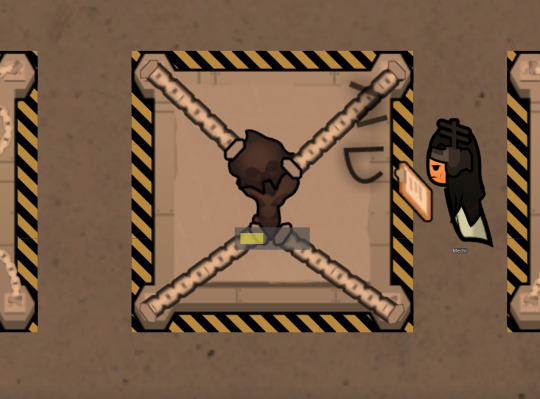

The solar flare meant Mechi was doing boring stuff like mining, so every time the cooldown for The Monolith or Ms Clarabelle (our sightstealer) was up, he sprinted to do that instead. I don't think he likes manual labour lmao
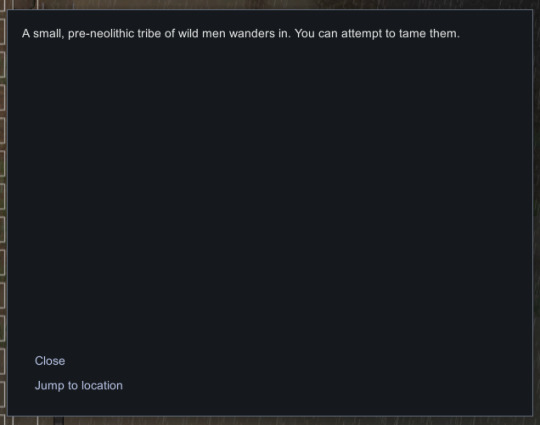

Some wild people came onto the map, which Mechi was not thrilled about because one of them was a taukai xenotype (cancer people, I think), and he thought they were hella ugly. A bit rude, but Mechi hates everybody anyway, so it's understandable.
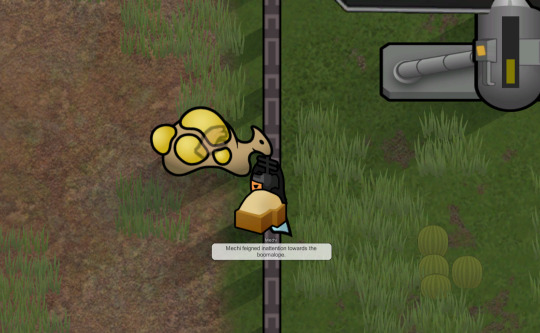
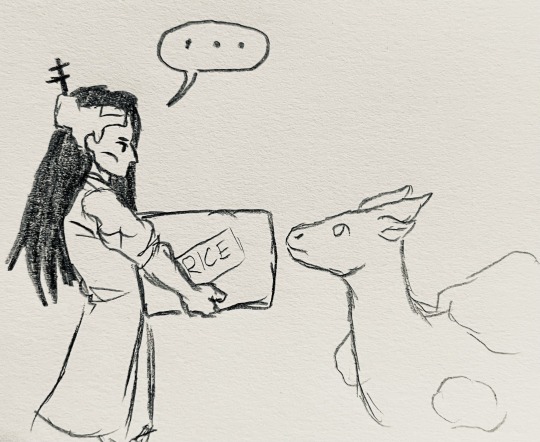
The grass is quite literally greener on this side of the fence, boomalope (the boomalope is now named Butter, and he is a very good boomalope)
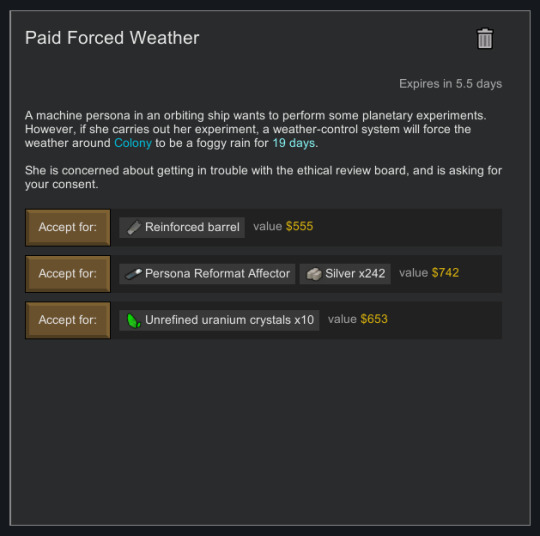

More silver is always nice, and foggy rain isn't so bad.
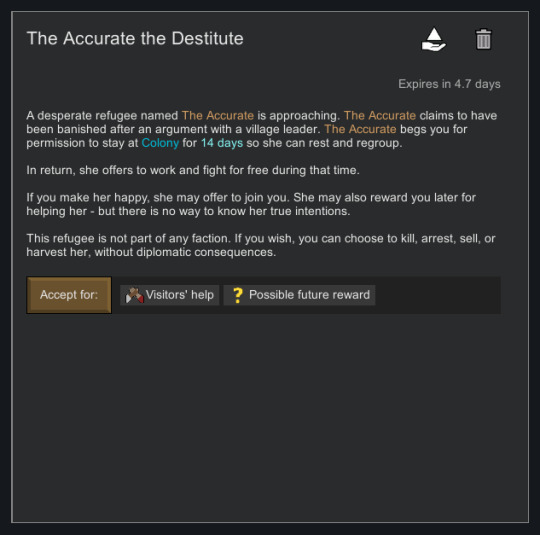



We did not offer help to either of The Accurates.
First | Next | Previous
#rimworld#gracie plays#A Mechanitor's Message#art#my art#traditional art#rimworld art#unpolished art#This anomaly stuff is fun#I assume it'll get scarier once I start provoking the void and stuff#but for now it's pretty chill#Mechi just hangs out with Ms Clarabelle every few days#then wanders over to gaze at The Monolith#nice and easy#It might get more annoying now that he has (ugh) neigbours#maybe some tragic accident will befall the wild people#we can only hope#Butter the Boomalope will provide chemfuel for a chemfuel powered generator#we have three wind turbines and a solar panel but you can never have too much power#plus boomalopes are cute so the fire risk is worth it imo#and not much fire risk when it's foggy rain anyhow#so that's something#rip The Accurate and The Accurate#I never did figure out if they were the same person but oh well#some mysteries will remain unsolved#have a fabulous day everybody!!! xoxo
50 notes
·
View notes
Photo



Envision Our Energizing-Vibrant Renewable Future Now
#earth day#earth month#renewable energy#renewable power#ai art#ai#image generation#design#climate art#renewable electricity#power sources#vibrant skies#solar power#solar#wind#wind energy#green future#solarpunk#renewables#midjourney#imagination#image building
253 notes
·
View notes
Photo
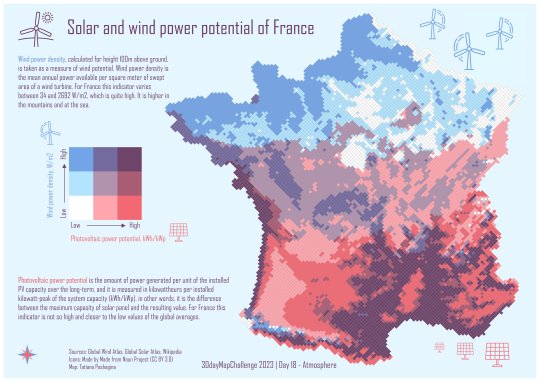
Solar and wind poer potential of France.
by viola__alba
79 notes
·
View notes
Text
Plant update!
I mentioned I had some unauthorized plants illegally growing in already-occupied pots. I'm now gonna transplant them to their own pots! Or I'll do as many as I can, because I am running out of soil.
This tomato looks the most established; I wasn't sure how to take it out, so I clumsily pushed my finger under it, trying to pull it up from below. I think I accidentally snapped away a piece of root, but it has another little piece so maybe it lives? It's a very feeble root system I have to say. But may it live!

I do feel much better seeing her in her own pot, feels right! The two tiny tomato plants underneath, I have damaged even worse, but I still planted them together in a little cup, hoping one might make it.
Next I checked on my paper towel seeds to see if any seed germinated, and there were some! I found 3 little dwarf tomatoes, and two broccoli seeds activated. I gathered up as much soil as I had left, and put them in 4 little plastic cups.

They're so tiny! Since they've already activated I feel like I can be confident these will come out of the soil, they're Certified Viable Seeds.
At this point I became banned from further gardening, because I don't have any more soil to work with. And this isn't the fault of my poor planning! Right when I was going to the forest to gather soil, my aloe arborescens had all those babies that needed to be transplanted if I were to keep them, and I couldn't abandon little aloe babies, that would be crazy. So in transplating all of them I spent.. half of my soil, and I need to go to the forest to get more. Earth is frozen, temperatures are below zero, ground is frozen, forest is cold. Good luck to me!
However there was another thing I figured I could do. All of my plants were starting to look leggy and sad, reaching to the window for there was not enough sun. I knew a trick to deal with this, even though I've never used it before, it felt like I really needed it now. I found a big piece of cardboard, and reached for used aluminum foil I had stashed 'just in case'. I wrapped the board in aluminum and placed it facing the window, and the plants.
The idea behind this is doubling the solar power the plants receive, by reflecting it right back at them. This way the plants get almost double amount of light, and they get it from both sides, so they stop reaching terminally towards the window, and straighten up a little! I realized after I've done this, that it could be more efficiently achieved with a big mirror, but I did not own a big mirror I could randomly move around, so I left it at cardboard and foil.
This is how it looks like installed:

I took the first picture yesterday, and the second today to compare progress, and even though the plants are still leaning out, their tips are straightened up! They are slightly more inclined to grow straight now they have a reflective source of light. I should have done this from day one, maybe plants wouldn't even get leggy that way. Am mesmerized by the new knowledge I acquired! My next batch of plants will thrive because I learned to use the power of the sun.
I also started using a big paper fan on them, fanning wind at them every day, because wind resistance communicates to baby plants they need to grow stronger stems! That's why professional greenhouses always have those big fans working, that and preventing the mold and disease occurring on wet leaves (wind dries faster).
Isn't it interesting how many normal household items you can use for growing a little garden in your kitchen? Plastic cups, paper fan, little spray bottle to water the tiniest seedlings, aluminum foil with some cardboard, my entire setup is just a big wooden plank placed on a cardboard box, it creates a little plant table. I bet everyone has most of the stuff they need for gardening at home.
#indoor gardening#growing food#germinating seeds#transplating tomatoes#early plants#january gardening#indoor garden hacks#doubling the solar power#using fan to mimic wind#learning about gardening
11 notes
·
View notes